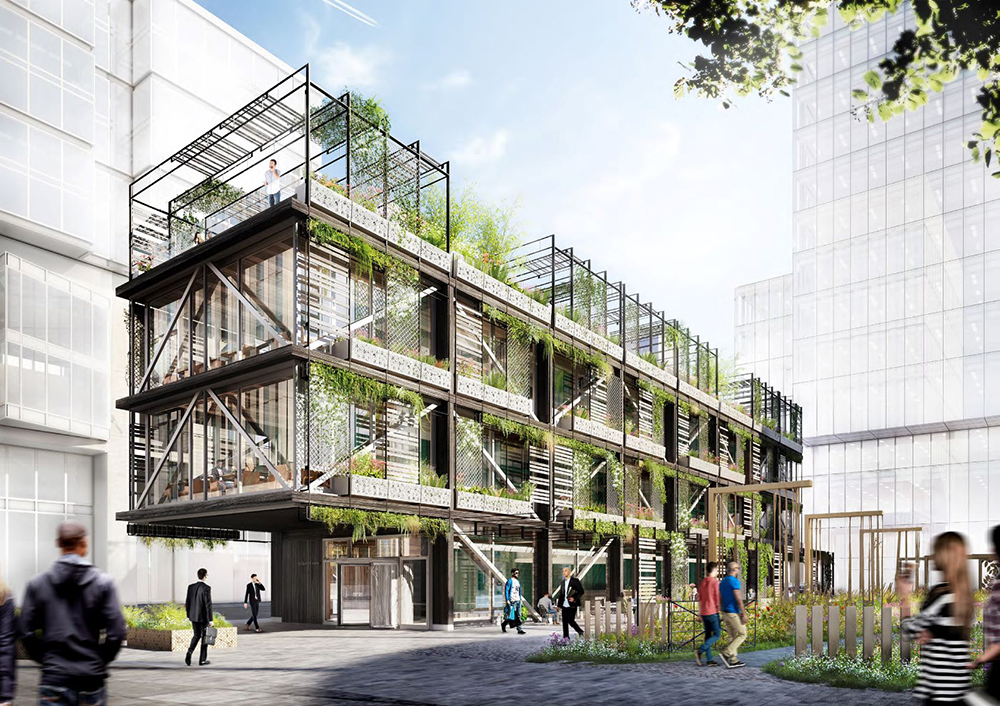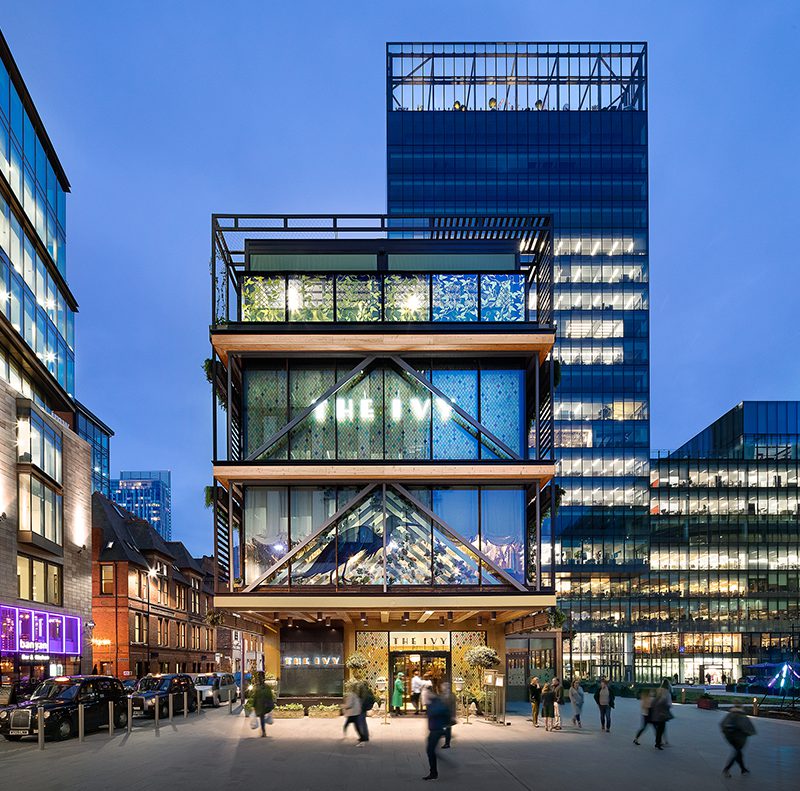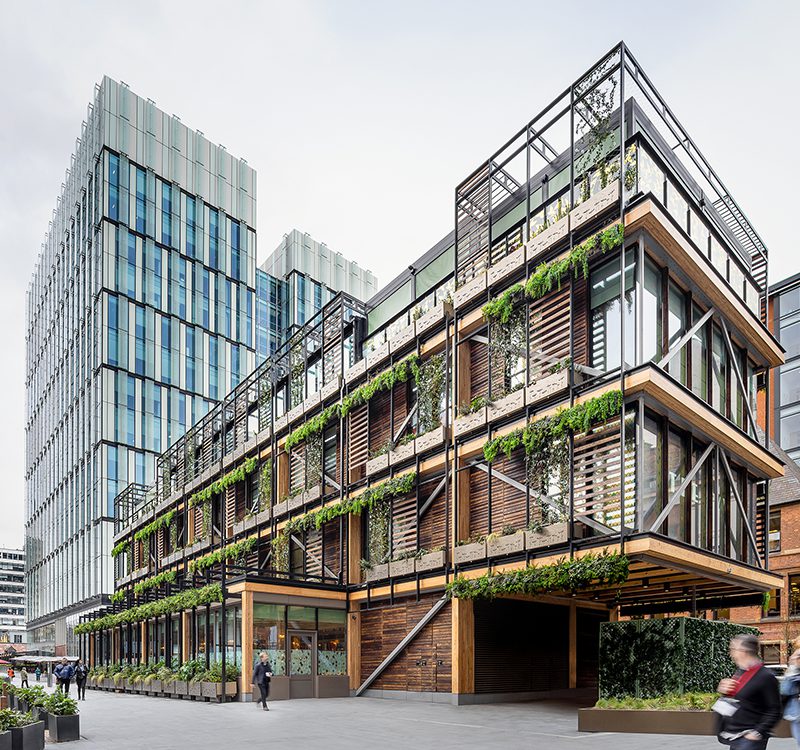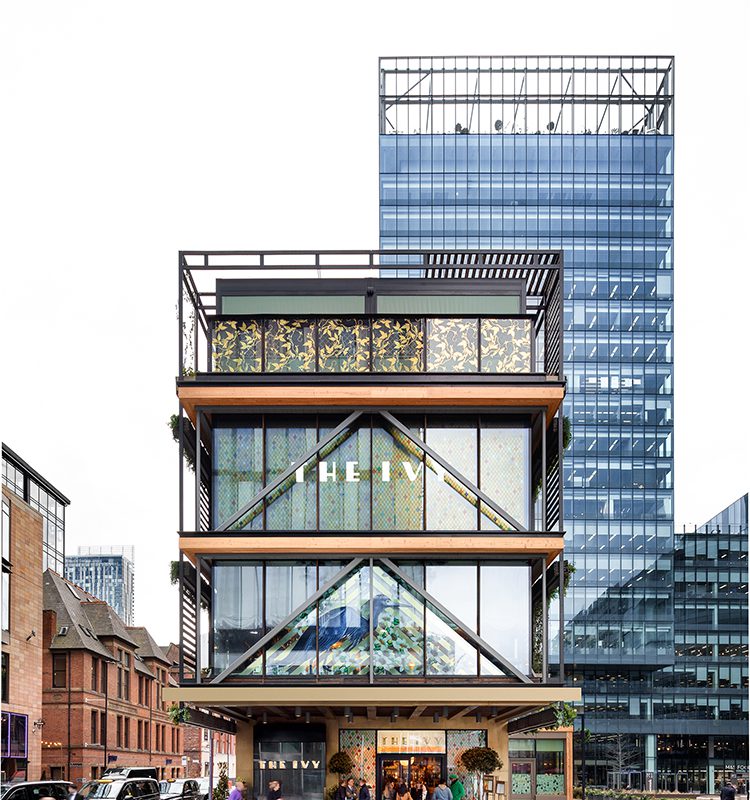
Project: The Pavilion
Company: B&K Structures and Stora Enso
Sector: Commercial
Technology: CLT



Overview:
The new Pavilion building at the heart of Allied London’s Spinningfields development in Manchester has recently launched as ‘The Ivy’ – a new addition to the high end restaurant group’s expanding chain. The four level Glulam and CLT building by Sheppard Robson Architects is defined by an external grid form that has been softened by a green veil of planting, forming a link between the surrounding commercial buildings and Spinningfield’s new public space known as ‘The Field’.
The highly innovative structure is formed of a Glulam frame based on a regular 6m grid pattern formed of 280mm deep structural elements that are expressed externally. The grid reveals the entire concept of the structure so that a viewer of the building is able to understand the location of the floor-plates and the columns simply from reading the external frame.
Fully expressed steel diagonal bracing sits above the timber grid, forming the next layer of the façade. Its presence on every bay helps give rigidity to the overall structure, and in doing so has made it possible to create 6m cantilevers in the structural bays at either end of the building. These cantilevered bays bring the building and its support columns in board of the build area, overcoming the issue of building above existing basements beneath Hardman Square.
A planter support system forms the final layer of the façade. Planting on each ledge floor gives the appearance of bands of green running across the building and wrapping over the roof-terrace where trellises, trees and canopies offer shelter for diners.
The innovative use of CLT and Glulam composite rib-panels for the floorplate has been a key part of the design, enabling the long, uninterrupted spans and slim floor profile required to match the external glulam beams. Floor depths have been reduced by up to 50% when compared to a standard CLT panel and floor to ceiling heights have been maximised. Use of the panels, which were designed by engenuiti and manufactured by Stora Enso, has also resulted in a lighter weight structure overall.
Specialist timber engineer, engenuiti, was engaged at concept stage to undertake the extensive engineering required to realize the architect’s vision of an externally expressed timber and steel frame, which introduced very complex issues relating to differential thermal movement and shrinkage.
The central Manchester site was heavily constrained during construction including a strict limitation to work within the building’s footprint which is surrounded by multi-storey operational commercial buildings. B&K Structures (BKS) were on site for just 12 weeks and installed the timber and steel structural elements in full height sections to overcome the site constraints.